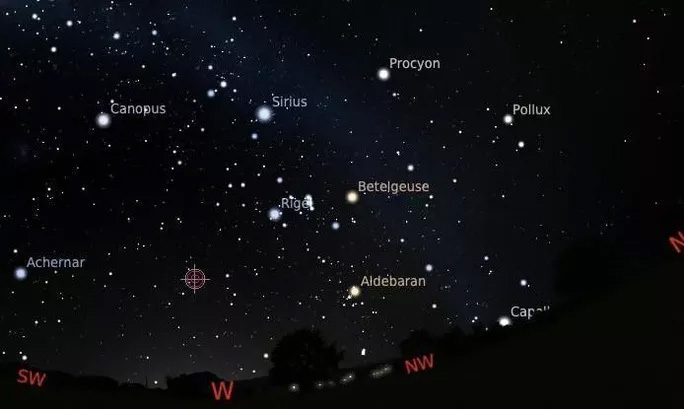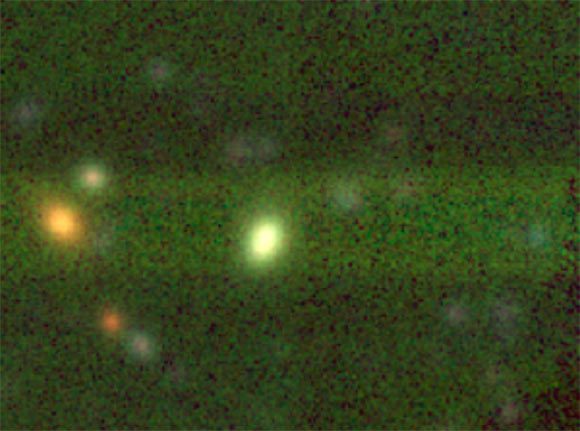The MeerKAT radio telescope in South Africa has captured a mysterious cosmic object resembling a laser beam, which has traveled an astonishing 5 billion light-years to reach our world.
The object, named LADUMA J033046.20-275518.1, is known as a “megamaser”, a microwave equivalent of a laser but extraordinarily powerful, where light is amplified through stimulated emission.
Planets, comets, clouds, and stars can all produce masers, but a “mega” maser must be emitted by something extraordinarily powerful.

The circle with a plus sign marks the source of the mysterious laser beam – (Image: MeerKAT).
According to a research team led by astronomer Marcin Glowacki from the Curtin University branch of the International Centre for Radio Astronomy Research (ICRAR) in Australia, the megamaser could be generated by “cosmic monsters” such as supermassive black holes or intense impacts, collisions, and mergers.
“This is the collision of galaxies that is creating new stars and feeding large black holes,” – Science Alert quoted Dr. Glowacki.
The light from this object has traveled across a distance of 5 billion light-years to reach our world. Therefore, it has been billions of years since the entity actually emitted the laser beam to Earth, and it may no longer exist.
The origin of this intense laser beam has been identified as coming from the galaxy WISEA J033046.26−275518.3, which has recently been renamed Nkalakatha.

Image of the host galaxy emitting the laser captured by another telescope – (Image: SUBARU)
This discovery was serendipitous, as the research team was conducting another mission to search for the 21 cm wavelength emitted by neutral hydrogen in the early universe, which has been stretched due to the expansion of the universe.
However, this finding has opened a new door for astronomers to better understand how galaxies merged in the past of the universe.
The research has been published online and will officially appear in the upcoming issue of The Astrophysical Journal Letters.




















































